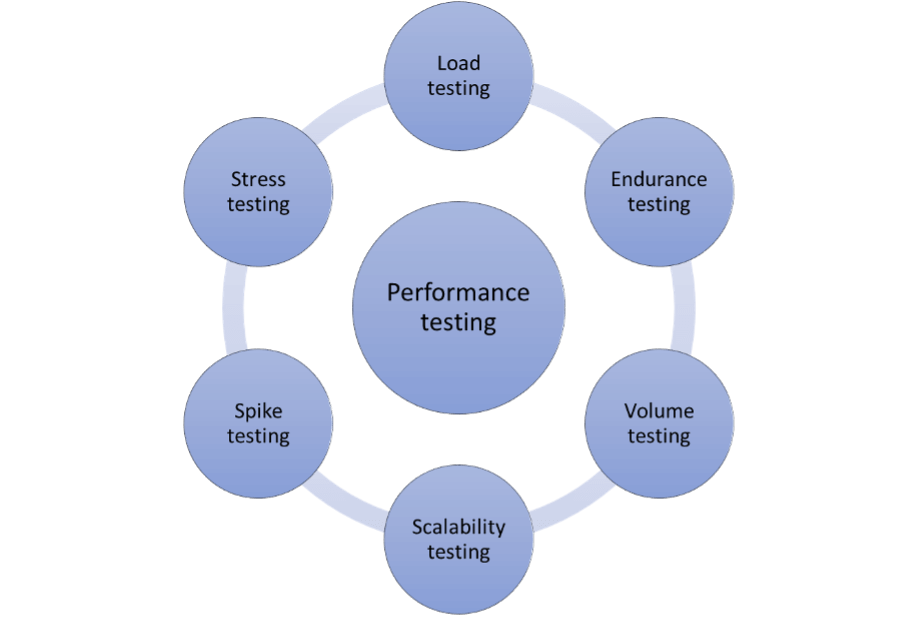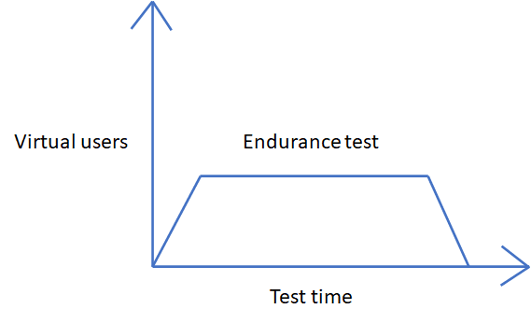What is Performance Testing?
Performance testing is carried out to assess the effectiveness of network, database, and internet servers. If you’re using the waterfall methodology, it’s crucial that you verify whenever a new version is released. However, if you are using the agile software development methodology, you must constantly test your applications. Performance testing gauges how well a program operates under typical operating circumstances. Performance testing’s objectives are to find any performance-related problems and confirm that the application can withstand usage levels that are anticipated. Performance parameters like reaction time, throughput, and resource utilisation can all be measured using performance testing. Performance testing aims to assess how well a web application works under various loads and how quickly it reacts to user requests. To find performance bottlenecks and places for improvement, it measures the application’s response time, throughput, and resource usage.
Methods of Performance Testing:
Performance testing uses a variety of techniques because it is a superset of other testing techniques. The key effectiveness testing techniques are listed below:
Figure 1: Methods of Performance Testing
- Load testing: Load testing is the method of simulating actual user load on any application or website is known as load testing. It examines the behaviour of the program under both light and heavy loads. A development project might use this kind of testing as it nears conclusion.
- Endurance testing: a kind of non-functional testing carried out to see if the software system can withstand a heavy load that is expected to last for a long duration.
Figure 2: Endurance Testing
- Volume testing: A type of Software Testing, where the software is subjected to a huge volume of data
- Scalability testing: A technique for non-functional testing that assesses how well a system or network performs when the volume of user queries is scaled up or down
- Spike testing: A software testing technique where the software is drastically tested under different traffic loads under both conditions
- Stress testing: A type of intentionally rigorous or intense testing. It entails testing past the point at which a system would normally break in order to notice the outcomes
Testing Methods Compared: A Real-World Example:
Think about an online store that anticipates heavy traffic during the holiday season. The website’s owner wants to make sure that there won’t be any performance problems as a result of the anticipated traffic. To assess the efficiency of the website under various workloads, performance testing would be carried out. Stress testing would be used to assess the website’s performance under heavy workloads, while load testing would be used to mimic various user loads. The performance testing findings would aid the website’s owner in improving the website’s performance and making sure it can manage the anticipated traffic without any problems.
The functional needs of a customer are frequently related to performance testing. Consider a customer who requests the creation of a service for managing event ticket sales. The customer, for instance, anticipates that the application can handle up to 50,000 requests per minute. Performance testing assists in validating this functional prerequisite.
What is Load Testing?
Load testing gauges how well an application operates under realistic loads. To make sure that the application can handle the anticipated level of usage and to find any performance-related problems that might occur under typical operating circumstances, load testing is used.
Methods of load testing:
Volume Testing: A type of load testing called volume testing is used to gauge how well a program performs when dealing with a lot of data. Finding out if an application can handle a lot of data without speed degradation is the aim of volume testing.
Scalability testing: Testing for scalability is a type of load testing used to gauge how well an application performs when subjected to growing loads. Testing an application’s scalability is done to see if it can manage more users without performance suffering.
Load Testing: A Real-world Example:
Consider an online store that anticipates a large volume of sales during the holiday season. The owner of the application wishes to make sure that there are no performance problems when handling the anticipated load. In order to assess the behaviour of the program under both normal and peak loads, load testing would be carried out. To gauge the application’s reaction time, throughput, and resource usage under various loads, performance testing would be used. The load testing findings would aid the owner of the application in optimising the application’s performance and making sure it can withstand the anticipated load during the holiday season.
Load testing is very helpful for ensuring that an application is operating within its known boundaries for a particular application that can manage 5,000 requests per minute. This will make it easier to predict how the app will act when it is near to its limit. You are lowering the possibility of failure by taking these measures.
What is Stress Testing?
Stress testing is a type of testing that assesses how well an application works under challenging circumstances, like high loads or an unexpected spike in traffic. The purpose of stress testing is to find any performance-related problems that might appear under difficult circumstances and to make sure the application can withstand sudden increases in traffic.
Methods of Stress Testing:
Spike testing: A technique for stress testing known as “spike testing” assesses how an application will behave under sudden and significant increases in user traffic. Using this technique, you can see how a program handles unexpected spikes in user traffic.
Volume testing: A stress testing technique that assesses an application’s performance under heavy data loads. This technique is employed to ascertain whether an application can handle large amounts of data without experiencing any problems, as well as how it reacts to such volumes.
Configuration testing: A technique for stress testing that assesses an application’s performance under various hardware and software setups is known as configuration testing. This technique is employed to ascertain whether an application can operate faultlessly under various hardware and software setups.
Stress Testing: A Real-World Example:
Think about a banking application that anticipates a large volume of deals at the close of the fiscal year. The owner of the application wishes to make sure that there are no performance problems when handling the anticipated load. To assess the behaviour of the application under heavy demands, stress testing would be carried out. The application’s behaviour under heavy data loads would be assessed using volume testing and spike testing, which mimic sudden spikes in user traffic. The application owner would be able to optimise the performance of the application and make sure it can manage the anticipated load with the aid of the results of the stress testing.
If an application must process more requests than the setup allows for an application programming interface that can manage 5,000 simultaneous requests, the app will crash. Companies need to be aware of this restriction because it enables them to scale their application as necessary.
Key Differences Between Performance Testing, Stress Testing, and Load Testing
There are some significant distinctions between performance testing, stress testing, and load testing even though all three kinds of testing are crucial for ensuring the functionality and dependability of software applications.
While stress testing focuses on evaluating an application’s performance under challenging circumstances, performance testing measures an application’s performance under typical operating conditions. On the other hand, load testing focuses on evaluating an application’s efficiency under realistic loads.
While stress testing is typically carried out as a one-time event to mimic extreme conditions, performance testing and load testing are typically done as part of the regular testing process.
| Topic | Performance testing | Load testing | Stress testing |
| Definition | The superset of load and stress testing that assesses the effectiveness and efficiency of the application | A performance testing’s subset that assesses how a program performs under heavy and light loads | A performance testing’s subset that assesses how applications function under heavy workloads |
| Main purpose | Evaluates the responsiveness, stability, and speed of the program | Determines how well the application can manage the expected loads. | Determines the application’s breaking point |
| Main aim | Obtaining a representation of an application’s behaviour under typical conditions | Raising the load on a web application | Preventing the computers from crashing under a sudden increase in demand for a long time |
| Load type | Ordinary to heavy loads | Typical to maximum load | Excessive traffic |
| Load limit | Both below and above the threshold of a break | A load limit is a breakpoint | Greater than the threshold of a break |
| Primary metrics | Response speed, throughput, CPU, memory, and error statistics | Response speed, number of simultaneous users, throughput, and resource usage |
Error rate, breaking point, and maximum user traffic
|
| Scenario Types | Testing for baseline, stress, spikes, and stamina |
Testing for baseline, stress, spikes, and stamina
|
Testing for spikes and stamina |
| Test Approach | Measuring the response time, throughput, and resource utilisation to determine the performance of a program. | Identifying performance issues by assessing the application’s behaviour when the anticipated workload is met. | Increasing the load until the application stops functioning as anticipated, one can determine the application’s breaking point |
| Common Tools | Gatling, Apache Bench, JMeter, LoadRunner, and WebLoad | BlazeMeter, JMeter, LoadRunner, and NeoLoad | BlazeMeter, JMeter, LoadRunner, and Apache JMeter Plugins |
| Examples |
Checking concurrent users, HTTP connections, or appropriate reaction times
|
A word processor by changing a lot of data, and testing a printer by sending a lot of data | Casually shut down and restart ports of a large network |
Comparing Performance, Stress, and Load Testing – Wrapping It All Up
Performance testing is a measuring technique used to assess a computer, network, or other device’s speed. It is a subset of stress and load testing. Load testing, a part of performance testing, simulates actual load on any program or website. Contrarily, stress testing establishes the system’s stability and resilience. Networks, databases, and website servers can all be tested for speed. The Client/Server, Web-based apps use load testing. Unexpected test traffic to your website is used to conduct stress testing.

